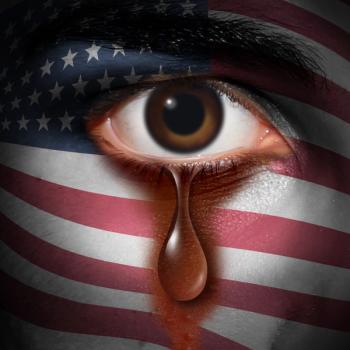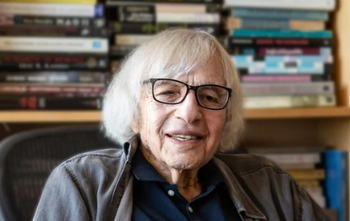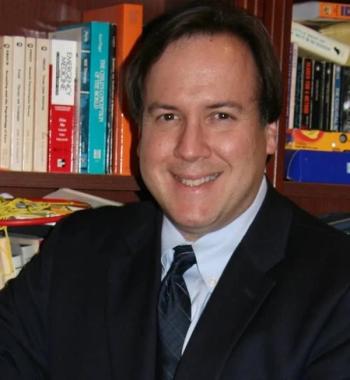
- Psychiatric Times Vol 36, Issue 10
- Volume 36
- Issue 10
Celebrity Suicide
Durkheim believed it was useless to prohibit newspapers from publishing stories of the ultimate act of self-harm. But he was wrong.
Patients who are at risk need to be assessed, monitored, and seen often. Their grief needs to be acknowledged, whether or not the object of grief was known to them.
PORTRAIT OF A PSYCHIATRIST
– Series Editor, H. Steven Moffic, MD
Dr Seeman is Professor Emerita, Department of Psychiatry, Institute of Medical Science, Toronto, Canada. She reports no conflicts of interest concerning the subject matter of this article.
On August 5, 1962, Marilyn Monroe was found dead of an overdose of barbiturates. I was a second-year psychiatry resident in New York City at the time, and I remember exactly where I was when I heard of her death. The sad news shook the staff and dazed the patients in our all women’s hospital ward. The ripple effect of Marilyn Monroe’s death can still be felt today simply by counting the number of books and films dedicated to the stories of Marilyn’s deprived childhood, her astonishing Hollywood career, and the fame and glamour of the men in her orbit, not to mention the psychiatric theories about her mental illness and the many conspiracy theories that continue to surround her death.
The female patients for whom I was responsible were particularly devastated by the news of her death because they identified with her in so many ways. Many had experienced similar childhoods in foster care, had aspired to be film stars, and had suffered through difficult relationships.
As it was summer when this happened, the head of our ward was on vacation in Europe. This left me temporarily in psychiatric charge.
Once I realized how deeply Marilyn Monroe’s death had affected my patients, I knew that some form of intervention was urgently needed. I immediately invited patients to join a support group that I would lead. I had led groups before-these were fairly routine on our ward. I knew how to be emotionally supportive and how to listen. I was confident that I was good at bringing people out. I had all the brash self-assurance of the very naïve.
Our group of eight got off to a good start. We cried and shared our feelings. The women talked about their suicidal urges. “Her life was so great compared to mine,” one woman said. Everyone agreed, as she added, “She was rich; she was beautiful; she was talented. Look at all the men who loved her!”
“This group is a catharsis,” I proudly pronounced to my fellow residents.
But this is what happened next. Three of the women in the group attempted suicide, one very seriously. Fortunately, all three survived. The head nurse, frightened by what had happened, contacted the head of our ward in Europe. He immediately cut his vacation short and returned to New York. The first thing he did was to end the group. Then, he gave me the worst dressing down of my life. I thought it was the end of my residency, but he allowed me to stay. What came to an end was my early confidence in myself as a therapist. Since then, there has always been a seed of doubt when I see a patient. I now ask myself, “By stirring the pot, am I perhaps doing more harm than good?”
It was not as if I hadn’t read up on suicide. I had read Ãmile Durkheim’s work in my first year. In the French sociologist’s 1887 study on
Today, this is called the
More recently, there has again been much discussion about the potentially
The sources of copycat suicides go beyond identification. By using new technology to analyze the emotional tone after celebrity suicide tweets, recent studies conclude that the unexpectedness of the suicide
Are there lessons here for clinicians? I think there are. In the wake of a celebrity suicide, it is wisest to express neither shock nor surprise to one’s patients. Patients who are at risk need to be assessed, monitored, and seen often. Their grief needs to be acknowledged. They also need assurances that you understand, are available, and that there are ways, admittedly difficult, by which one can overcome adverse circumstances and survive anguish. Persuading someone that viable alternatives to suicide exist has been called the Papageno effect in honor of the character
My own experience suggests that overzealous intervention is not a good idea and that it is best to check with elders in the field who are more experienced before leaping into unknown therapeutic territory. Sensitive topics such as thoughts of suicide need private one-on-one discussion, not group therapy. Membership in a group transforms a person and the results of such transformations can be difficult to foresee.
Originally posted on 9/10/19 and has since been updated.
References:
1. Durkheim E.
2. Wheeler L. Toward a theory of behavioral contagion. Psychol Rev. 1966;73:179-192.
3. Haw C, Hawton K, Niedzwiedz C, Platt S. Suicide clusters: a review of risk factors and mechanisms. Suicide LifeThreat Behav. 2013;43:97-108.
4. Niedzwiedz C, Haw C, Hawton K. Platt S.
5. Phillips DP.
6. Seeman MV.
7. Stack S. Celebrities and suicide: a taxonomy and analysis, 1948-1983. Am Sociol Rev. 1987;52:401-412.
8. Fahey RA, Matsubayashi T, Ueda M. Tracking the Werther effect on social media: emotional responses to prominent suicide deaths on twitter and subsequent increases in suicide. Soc Sci Med. 2018;219:19-29.
9. Ueda M, Mori K, Matsubayashi T, Sawada Y. Tweeting celebrity suicides: users’ reaction to prominent suicide deaths on Twitter and subsequent increases in actual suicides. Soc Sci Med. 2017;189:158-166.
Articles in this issue
about 6 years ago
The End of Human Civilizationabout 6 years ago
Transit: Already in Hellabout 6 years ago
What Do Mass Murderers Have in Common?about 6 years ago
“Off Label” Does Not Mean “Off Limits”about 6 years ago
6 Ways to Protect the Kidneys While Prescribing Lithiumabout 6 years ago
The Opioid Epidemic Settlements: Who Will Benefit?Newsletter
Receive trusted psychiatric news, expert analysis, and clinical insights — subscribe today to support your practice and your patients.













